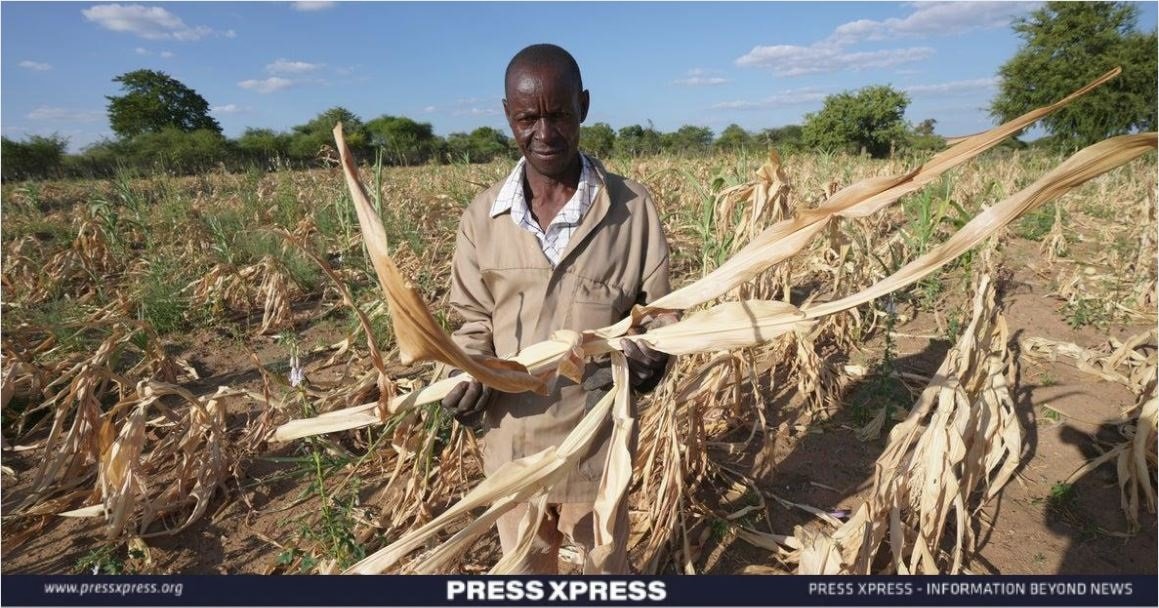By merging traditional wisdom with modern innovations and investing in climate-smart practices, Africa can ensure food security and economic prosperity for its people amidst the challenges of a changing climate.
From the sun-baked plains of Zimbabwe to the coastal terrains of Somalia, African farmers are embarking on a journey that spans millennia as they confront the challenges posed by climate change. Africa, with the world’s youngest population, faces the worst effects of a warming planet while contributing the least to the problem.
You can also read: Agri-tech’s Impact on Modernizing Bangladesh’s Agricultural Practices
Farmers are scrambling to make sure the booming population is fed. With more than 60% of the world’s uncultivated land, Africa should be able to feed itself, some experts say. And yet three in four people across the continent cannot afford a healthy diet, according to a report last year by the African Union and United Nations agencies. Reasons include conflict and lack of investment.
Ancient Wisdom in Zimbabwe
In Zimbabwe, where the El Nino phenomenon has worsened a drought, small-scale farmer James Tshuma has lost hope of harvesting anything from his fields. It’s a familiar story in much of the country, where the government has declared a $2 billion state of emergency and millions of people face hunger. But a patch of green vegetables is thriving in a small garden the 65-year-old Tshuma is keeping alive with homemade organic manure and fertilizer. Previously discarded items have again become priceless.

“This is how our fathers and forefathers used to feed the Earth and themselves before the introduction of chemicals and inorganic fertilizers,” James Tshuma said. He applies livestock droppings, grass, plant residue, remains of small animals, tree leaves and bark, food scraps and other biodegradable items like paper. Even the bones of animals that are dying in increasing numbers due to the drought are burned before being crushed into ash for their calcium.

Blending Tradition with Modernity
Climate change is compounding much of sub-Saharan Africa’s longstanding problem of poor soil fertility, said Wonder Ngezimana, an associate professor of crop science at Zimbabwe’s Marondera University of Agricultural Sciences and Technology. “The combination is forcing people to re-look at how things were done in the past like nutrient recycling, but also blending these with modern methods,” said Ngezimana, whose institution is researching the combination of traditional practices with new technologies. Apart from being rich in nitrogen, organic fertilizers help increase the soil’s carbon and ability to retain moisture, Ngezimana said. “Even if a farmer puts synthetic fertilizer into the soil, they are likely to suffer the consequences of poor moisture as long as there is a drought,” he said.
Reviving Ancient Crops
Other moves to traditional practices are underway. Drought-resistant millets, sorghum, and legumes, staples until the early 20th century when they were overtaken by exotic white corn, have been taking up more land space in recent years. Leaves of drought-resistant plants that were once a regular dish before being cast off as weeds are returning to dinner tables. They even appear on elite supermarket shelves and are served at classy restaurants, as are millet and sorghum. This could create markets for the crops even beyond drought years, Ngezimana said.

Zimbabwe’s economic landscape
Zimbabwe’s economic landscape remains challenging, as evidenced by statistical trends. In 2023, the real GDP saw a growth of 5.5%, slightly lower than the previous year’s 6.5%. This growth was primarily driven by expansions in agriculture, mining, and services fueled by remittances. However, persistent macroeconomic instability, characterized by monetary volatility and significant exchange rate fluctuations, continues to restrain the economy from reaching its full potential.
Inflation remains a pressing issue, with the local currency’s depreciation exacerbating the situation. From December 2023 to February 2024, annual inflation surged from 26.5% to 47.6%, marking the fourth consecutive monthly increase. The official exchange rate depreciated by 788% in 2023, while the parallel market premium reached an estimated 30% as of February 2024.
The fiscal landscape faced heightened pressures in 2023, driven by pre-election spending and the transfer of external liabilities from the Reserve Bank of Zimbabwe to the treasury.
Looking ahead to 2024, real GDP growth is expected to further decelerate to 3.3%, influenced by structural constraints, macroeconomic instability, an El Niño-induced drought, and declining commodity prices. The drought will impact rain-fed crops and exacerbate electricity shortages.
Greenhouse Revolution in Somalia
In Somalia, greenhouses are revolutionizing agricultural practices, offering year-round produce to urban consumers and providing employment opportunities, especially for the youth.
Sustainable Urban Agriculture
With over 250 greenhouses in and around Mogadishu, locally produced vegetables are now readily available, reducing reliance on imported produce and fostering economic stability.
Economic Empowerment and Stability
The shift towards greenhouse farming not only ensures food security but also empowers pastoralist communities with resilient and sustainable livelihoods, reducing dependency on traditional livestock rearing.
Climate-Smart Innovations in Kenya
Kenya is witnessing a transformative change in agriculture with the introduction of climate-smart bean varieties, tailored to withstand diverse climatic conditions and mitigate the impacts of reduced rainfall.
Nyota Bean: A Game-Changer
The “Nyota” bean variety matures rapidly, ensuring harvests before the onset of droughts. Collaborative efforts between research institutions aim to bolster national bean production and meet the growing demand.
Enhanced Yields and Consumer Satisfaction
Farmers like Benson Gitonga are experiencing increased yields and profits with the new bean variety, which also boasts low flatulence levels, appealing to health-conscious consumers.
Conclusion
As sub-Saharan Africa grapples with the multifaceted challenges of climate change and soil fertility, innovative approaches merging traditional wisdom with modern technologies offer hope for a more resilient and sustainable agricultural future. Through concerted efforts and investments in climate-smart practices, the region can navigate these challenges while ensuring food security and economic prosperity for its people.


